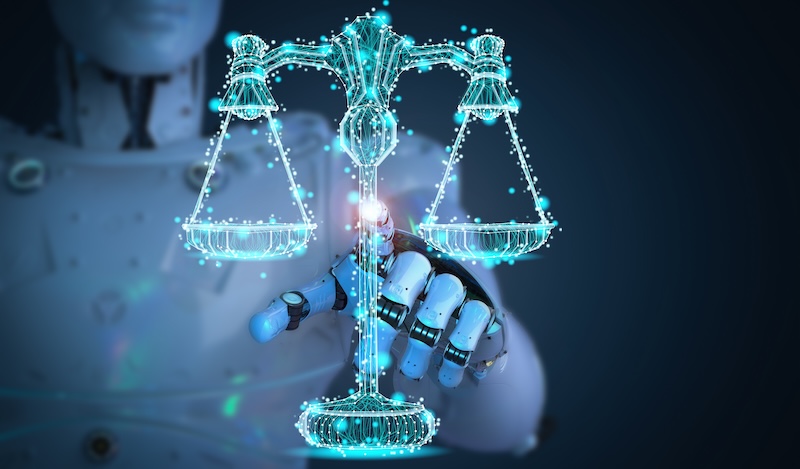Bristol Uni student Sirak Kebede examines the tax through the eyes of Rawls and Nozick

The Labour government’s introduction of VAT on private school fees has sparked fierce debate. Supporters of the policy believe that wealthier families must pay “their fair share”, whilst critics argue the policy has “a damaging effect on individual children” and restricts personal autonomy. This article will evaluate the policy through the lens of two competing theories of justice; Nozick’s libertarian Justice as Entitlement and Rawls’ Justice as Fairness. Further, the article will also consider how the concept of justice informs wider interventionist policies and sheds light on the role of the state impacting change through education.
Rawls
John Rawls (1921–2002) was prominent political philosopher who is famed for developing his concept of justice in his seminal work A Theory of Justice (1971) (later to be Political Liberalism). What he offered was a revamped way of organising the political, legal and social landscape and his philosophical influence still reverberates loudly around the world.
Justice as Fairness
Central to Rawls’ theory of justice are two concepts; the Original Position and the Veil of Ignorance. The two principles operate as structures that help rational individuals make choices that would make for a fairer society.
The Veil of Ignorance describes an unawareness of one’s own position in society. It is a thought experiment in which individuals make decisions about social structures and principles of justice without knowing their future position in that society. If individuals are unaware of their position in society or their particular characteristics (such as race, gender, age and so forth), they are encouraged to make more rational decisions. For example, it would be constructive for everyone to have better access to education, mainly due to the fact that you would not know where you could end up.
Behind the aforementioned, individuals rely on two key principles that construct the Original Position.
- (i) each person is to have an equal right to the most extensive basic liberties compatible with similar liberty for others, and
- (ii) social and economic inequalities must satisfy two conditions: they must be (a) to the greatest benefit of the least advantaged, and (b) attached to offices and positions open to all.
The second element of the principle (Part a), known as the Difference Principle, lends itself as a powerful instrument to scrutinise the VAT policy.
Private schools naturally fulfil the inequality element as only a small part of society (around 7%) has access to it, underpinned by their socioeconomic standing, as opposed to any form of merit.
Thus, applying the VAT on private schools could allow income and wealth to be redirected. If the money generated was funnelled into state schools that would not normally have the same resources, especially the worst performing ones, the overall effect would correspond with Rawls’ notion of aiding those worse off in society and evening out the playing field.
Lastly, Rawls readily admits that some inequality is positive as it can act as an incentive, which aids innovation. Rawls advances a form of justice that distributes its capital to the most disadvantaged, creating fair equality of opportunity and demonstrates how state intervention could lead to a fairer society. Through the Rawlsian lens, the argument to impose a sales tax on private schools presents itself as compelling.
Nozick
Robert Nozick (1938–2002) is another influential philosopher and was Rawls’ contemporary but sat at the opposite end of the justice spectrum. His influential work, Anarchy, State, and Utopia (1974), is at the heart of Libertarian doctrine and also serves as a reaction to Rawls’ thesis. Nozick’s work is still reflected in deliberations across the globe, specifically on taxation, individual liberties and the state.
Entitlement Theory
Nozick’s position rests upon three distinct principles:
- (i) Justice in Acquisition
- (ii) Justice of Transfer
- (iii) Rectification of Injustice
The first two principles will be used to examine the policy. Nozick believes that an individual’s assets or capital should not be subject to distributive policy, as long as they acquired it through legal means. For Nozick, the means of distributing capital resource by levying a sales tax on a small portion of society does not justify the ends. The Nozickian position suggests that if there must be taxes, they should be general and only fund minimal state functions, as opposed to targeted policies designed to achieve the government’s broader goals of scholastic equitability. When it comes at the expense of those better off in society, Nozick likens tax to “forced labour”.
Want to write for the Legal Cheek Journal?
Find out moreEducation, in this sense, is like any other product, which can be bought and owned by the individual. Justice of Transfer reflects this position, if the transfer (of goods, land, property and so forth) is legitimate and consensual the individual is exercising personal autonomy and so the state should not intervene.
This is neatly conceptualised by Nozick’s ‘Wilt Chamberlain’ metaphor (named after the successful American basketball player. To explain this metaphor I have supplanted Chamberlain with Lionel Messi for contemporary affect. For instance, whenever Messi plays, he takes fifty cents of every ticket sold, as he attracts the most fans. Therefore, if 50,000 fans were to descend to watch him play, that means he would have effectively earnt €25,000. This means that Messi (all things being equal) has more money than everyone else, despite the fact that everyone has played in the same game for the same amount of time. What Nozick shows through metaphor is that it is unequal, yet it would be difficult to argue that it is not just. Moreover, it further illuminates the second principle, as a voluntary transaction actually preserves an individuals’ liberty.
This analogy is used to elucidate how a distributive policy encroaches on one’s liberty and that the state is there to promote individual freedoms and not social equality. In light of this, we can see how Nozick would view such a policy as coercive; it undermines an individual’s ability to choose what is best for them, the transfer is no longer just. Equally, should those same individuals want to help fund worse off schools, then that would be viewed as a free-market matter and not forced. Nozick’s theory would suggest that the levying of a VAT on private schools symbolises an interference on personal autonomy. He makes it clear that such distributive policies are coercive, forceful and a governmental overreach that penalises success.
Comparison
The Nozickian would believe the policy is unfair because it targets only a small number, specifically for education. Under Nozickian justice, individuals should be able to spend as they see fit, which in this case would mean on private education. Yet, this has an unintended consequence of creating a lopsided society; in the long term it creates bigger issues as disparity between demographics grow. As opportunities for a better education have a direct link to better employment prospects which leads to better life outcomes.
Rawls’ distributive justice would assist those who have the capability but not necessarily the means. The theory helps promote the virtue of merit and subsequently mitigates the advantages imparted by private education. The benefits of which are seen in the most influential positions, take for instance parliament which is 23% privately educated or the UK’s senior judges at 65%. It creates a homogenous vacuum, where the plane of ideas echoes one another, which has the potential to stifle innovation.
Moreover, the UK is no stranger to interventionalist policies, a prime example of this fairmindedness is the Education Act 1944. In order to fund such legislation, taxes were raised and eventually led to a net benefit for the country as a whole. Through this lens, it is clear to see why more of society would be drawn to the Rawls’ ideas of distributive justice. Societal equitability through the power of education presents a more compelling argument, which in turn allows for greater universal fairness.
To further understand the argument, the state’s application of justice can be likened to a GPS in a car; the car represents society, and the driver represents the state. Rawls and Nozick might be thought of as different navigation systems, each offering a different route to societal order and effective justice. The government must steer between these normative frameworks, often under the constraints of legal feasibility and political pragmatism. It is these limits which makes for a non-definitive answer, as it is not black and white; the true answer lays somewhere in the middle. Nonetheless, the author is persuaded by Rawls’ argument and the virtues of distributive justice.
Conclusion
Finally, the divergence in theories presents a philosophical fissure, which alter perspectives of justice and fairness. The theories offered by Rawls and Nozick are an expression of how two vastly different understandings of justice can lead to fairer outcomes in society. Rawls’ theory is favourable as he prioritises merit through distributive action, even if it means taxing justly acquired income. His argument offers a persuasive framing of the policy, which leads to more equitable outcomes in society, especially in education.
Sirak Kebede is a second-year law student at the University of Bristol and an aspiring barrister.
The Legal Cheek Journal is sponsored by LPC Law.




















